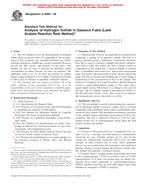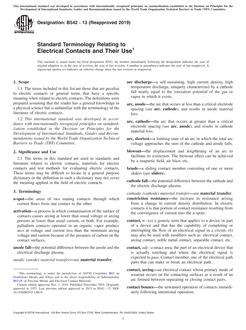This standard was transferred to SEMI (www.semi.org) May 2003
1.1 these test methods describe measurement of polarizer contrast. A distinction is made between contrast, which is an intrinsic polarizer property, and extinction, which is a comparison between two polarizers.
1.2 these test methods are applicable to polarizers that operate in a transmissive mode at near-normal incidence. Angular or translative offset of the transmitted beam is acceptable if the entire transmitted beam power can be measured.
1.3 The polarizer size or aperture is not limited by the test methods, but the operator must appreciate that the contrast will be an avenge over the beam spot on the polarizer. Contrast measured at one location on the aperture does not necessarily apply to the entire aperture.
1.4 These test methods are limited to wavelengths for which the tester can provide a collimated beam, and correctly measure changes in the transmitted beam power. The contrast obtained at one wavelength does not necessarily apply at any other wavelength.
1.5 The maximum contrast obtained by these test methods is limited by the dynamic range of the source-detector combination.
1.6 This standard does not purport to address all of the safety concerns, if any, associated with its use. It is the responsibility of the user of this standard to establish appropriate safety and health practices and determine the applicability of regulatory limitations prior to use. For hazard statement, see Section 7.
Product Details
- Published:
- 01/01/2002
- Number of Pages:
- 4
- File Size:
- 1 file , 37 KB


